Strong M7.1 solar flare erupts from Region 3615
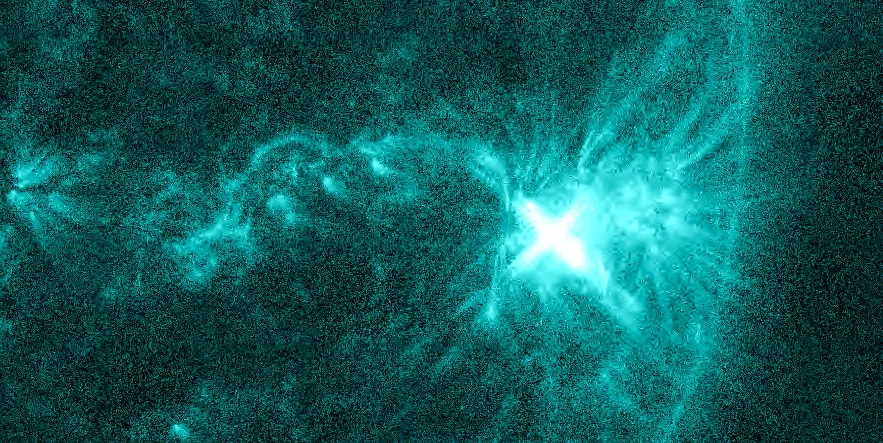
A strong solar flare measuring M7.1 erupted from Active Region 3615 at 06:29 UTC on March 28, 2024. The event started at 06:16 UTC and ended at 06:36.
There were no radio signatures detected that would suggest a coronal mass ejection (CME) was produced. Even if it was, the location of this region — now close to the west limb — does not favor Earth-directed CMEs.
Radio frequencies were forecast to be most degraded over South Asia and the Indian Ocean at the time of the flare.
“Users of high frequency (HF) radio signals may experience temporary degradation or limited blackout on some of the sunlit side of Earth. The general public need not be concerned,” SWPC forecasters said.
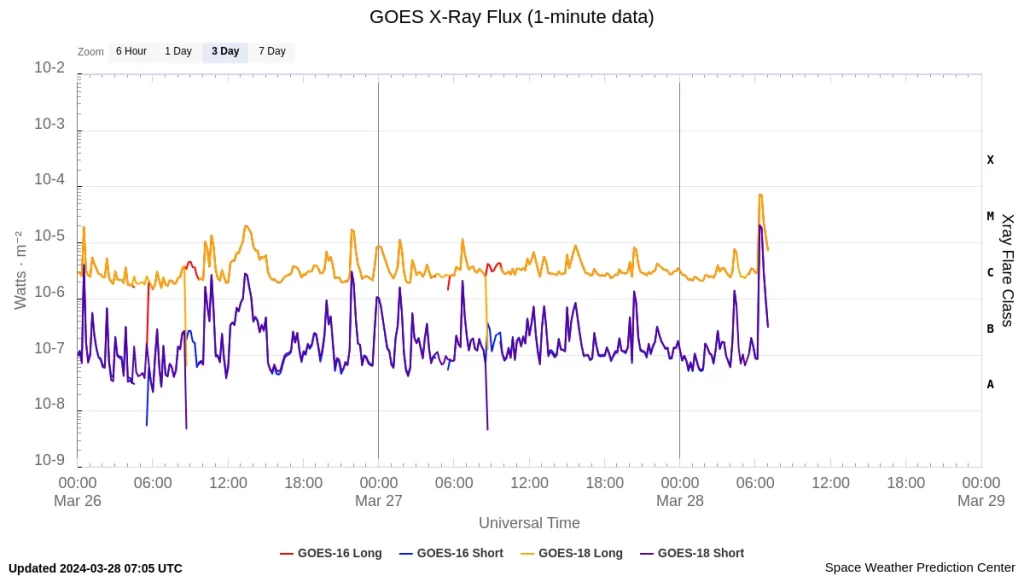
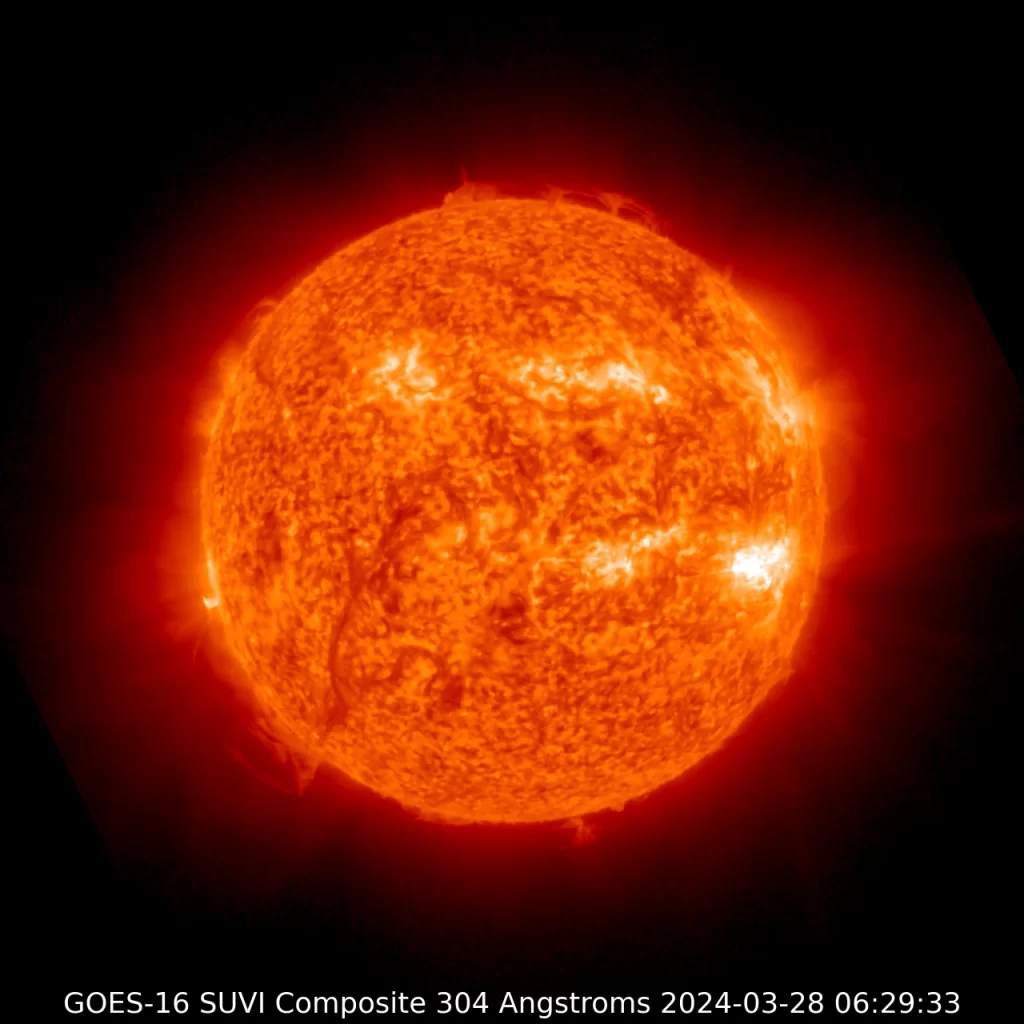
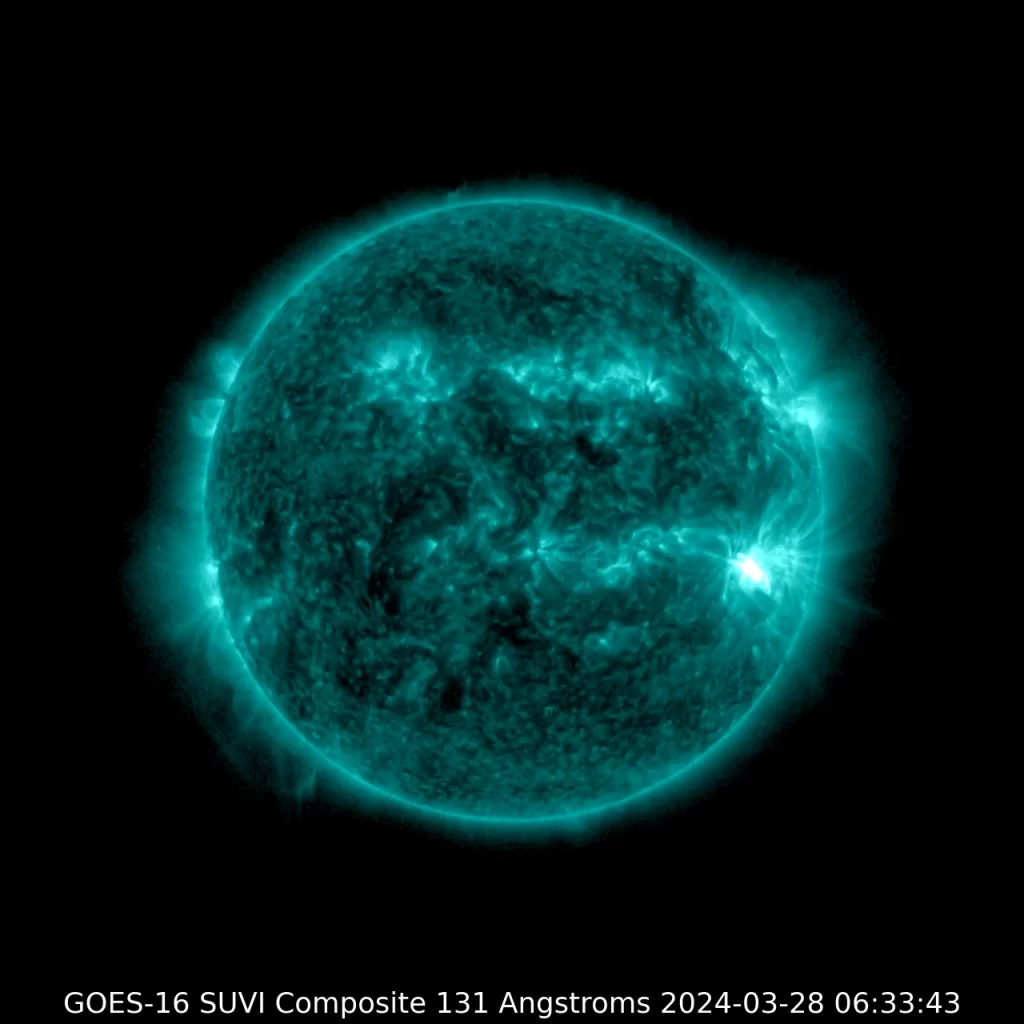
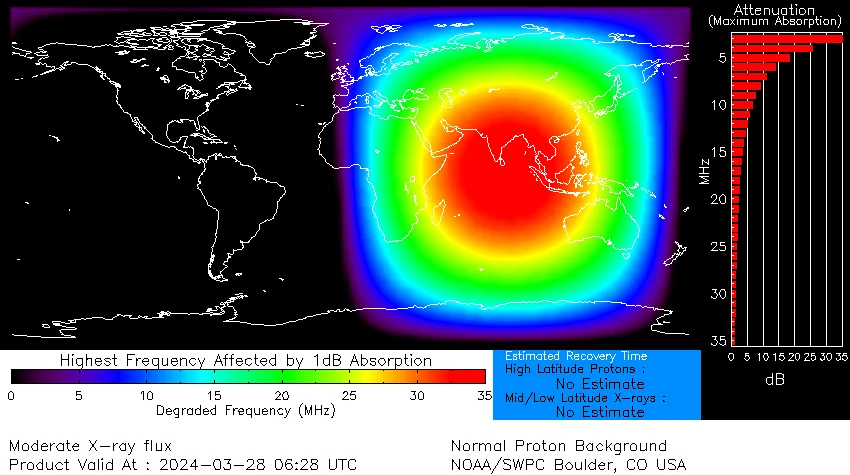
Solar activity was at moderate levels in 24 hours to 00:30 UTC on March 28. Region 3615 (beta-gamma-delta) was responsible for two M1.1 flares and numerous C-class flares. This AR continued to be the largest, most complex region on the visible disk. Region 3617 (alpha) exhibited signs of decay, and Region 3623 decayed to plage. No Earth-directed CMEs were observed in coronagraph imagery.
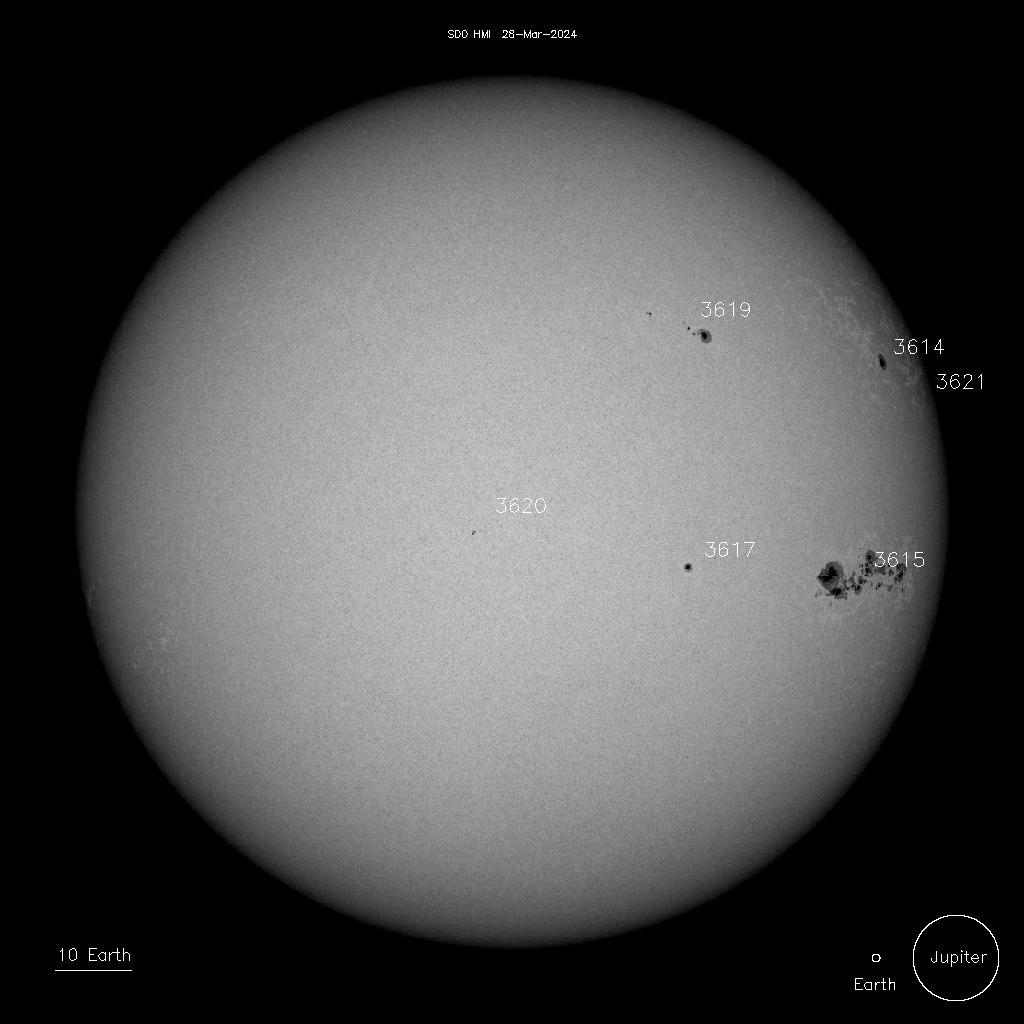
Solar activity is expected to continue at moderate/high levels, with a chance for X-class flares through March 30, primarily due to the flare potential of Region 3615.
The greater than 10 MeV proton flux remained slightly elevated over the same period but below the 10 pfu threshold. The greater than 2 MeV electron flux was at normal to moderate levels.
A chance for S1 – Minor solar radiation storms will persist through March 30 primarily due to the potential and location of AR 3615. There is a chance for the greater than 2 MeV electron flux to reach high levels beginning on March 28.
Over the past 24 hours, solar wind parameters reflected the waning influence of a CME produced by X1.1 solar flare on March 23. The total field was between 4 – 5 nT, and the Bz component was mostly northward. Solar wind speeds averaged 500 km/s while the phi was predominantly positive.
Ambient-like solar wind conditions are expected to return on March 28. Slightly elevated parameters are possible through March 30 with coronal hole high speed stream (CH HSS) influences.
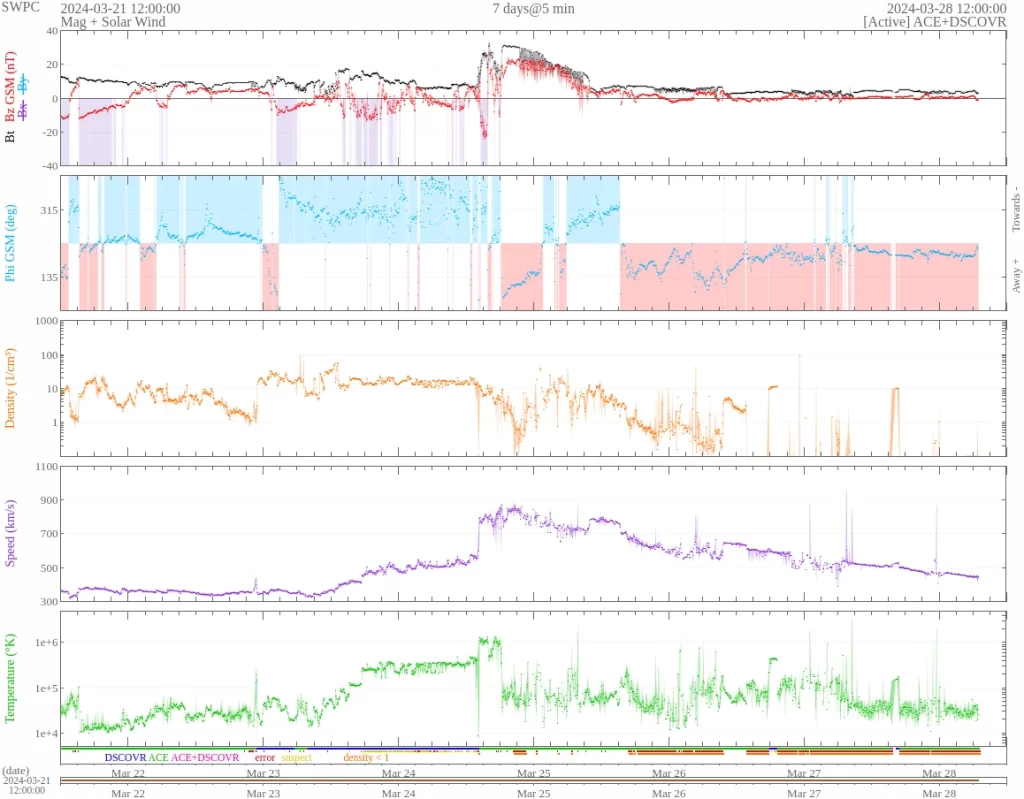
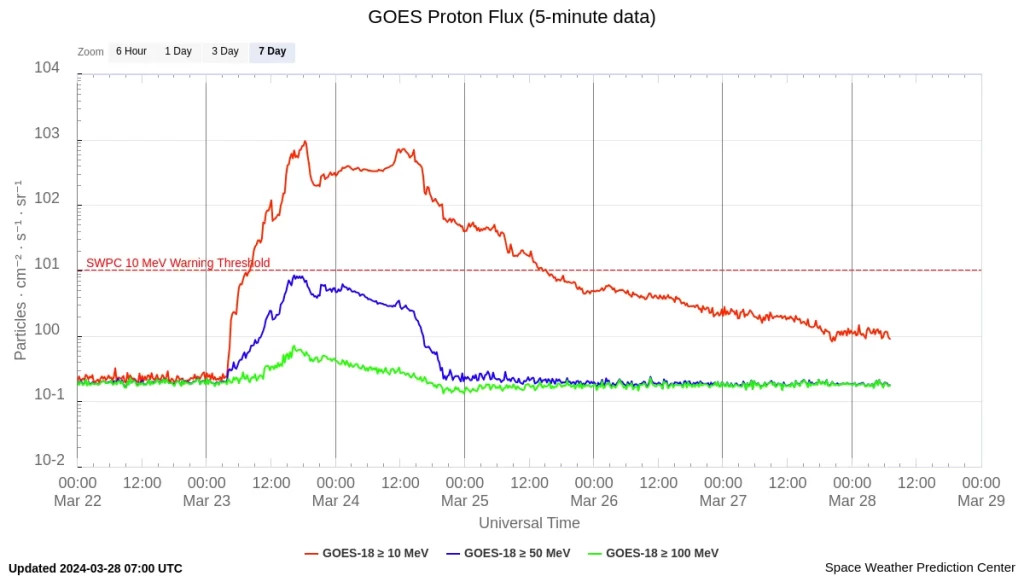
The geomagnetic field was at quiet to unsettled levels. Mostly quiet conditions are expected to prevail on March 28, with a return of isolated unsettled periods by late on March 29/30 under negative polarity CH HSS effects.
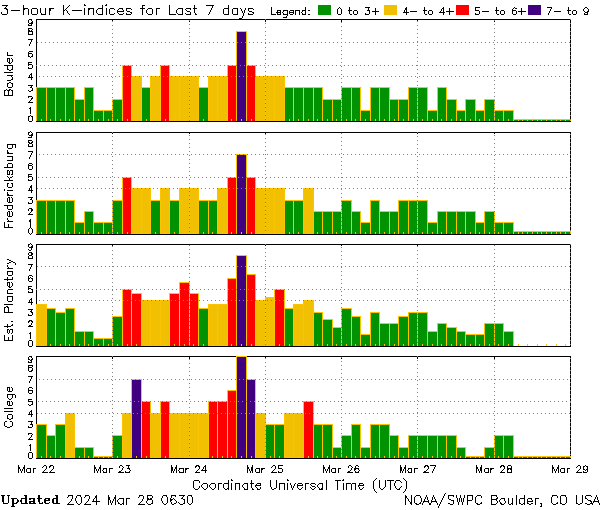
References:
1 Forecast Discussion – Issued: 2024 Mar 28 0030 UTC – Prepared by the U.S. Dept. of Commerce, NOAA, Space Weather Prediction Center
Featured image: M7.0 solar flare on March 28, 2024. Credit: NASA SDO/AIA 304, Helioviewer, The Watchers

Commenting rules and guidelines
We value the thoughts and opinions of our readers and welcome healthy discussions on our website. In order to maintain a respectful and positive community, we ask that all commenters follow these rules.